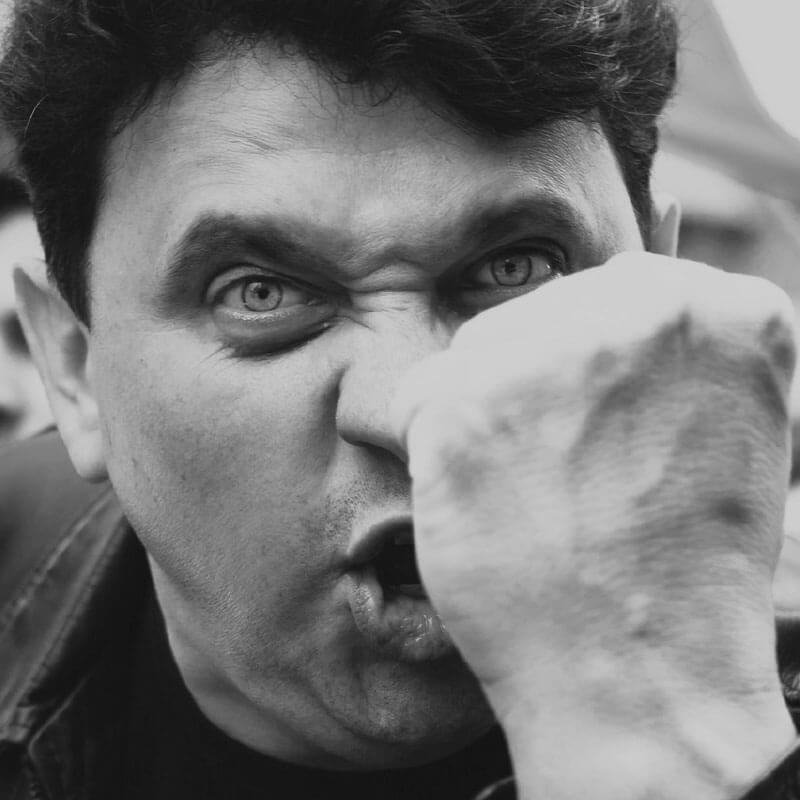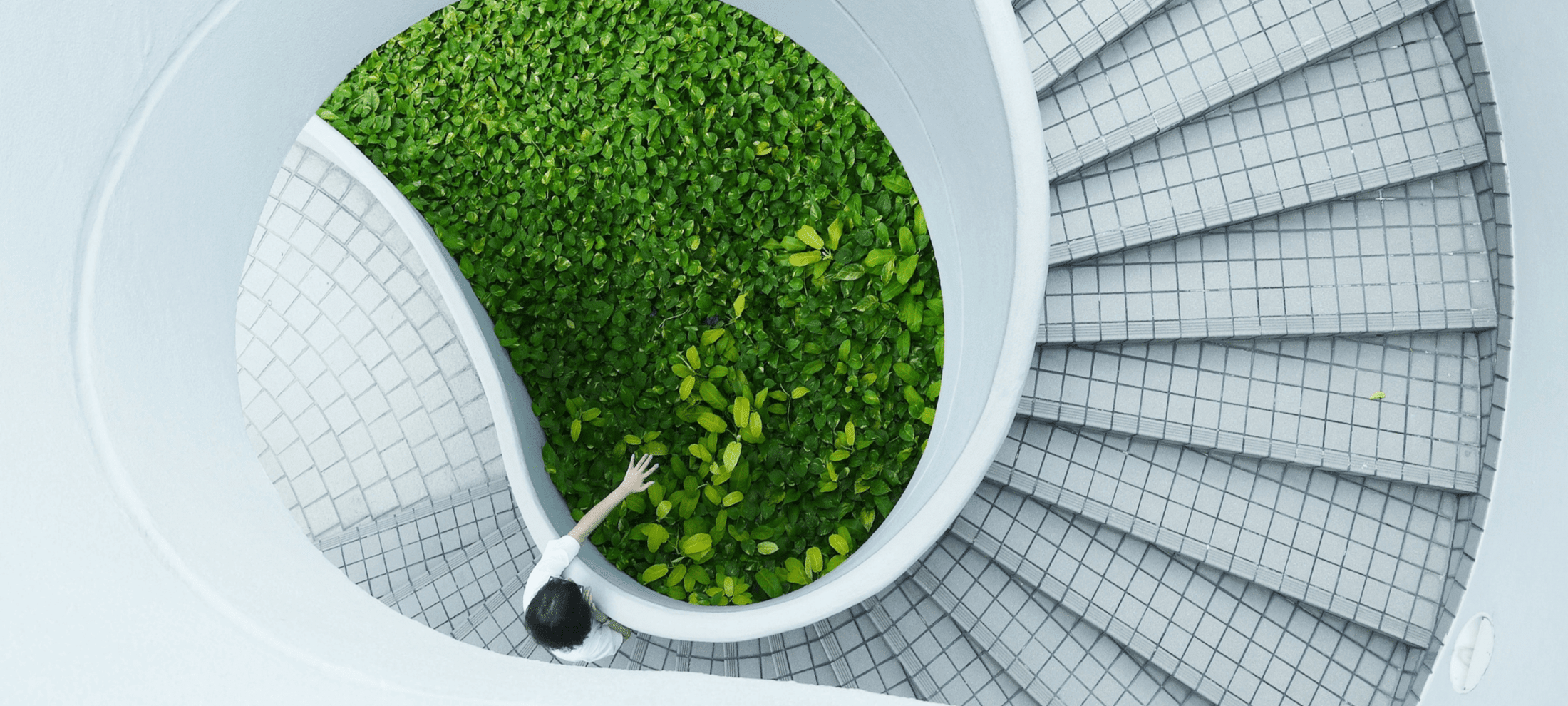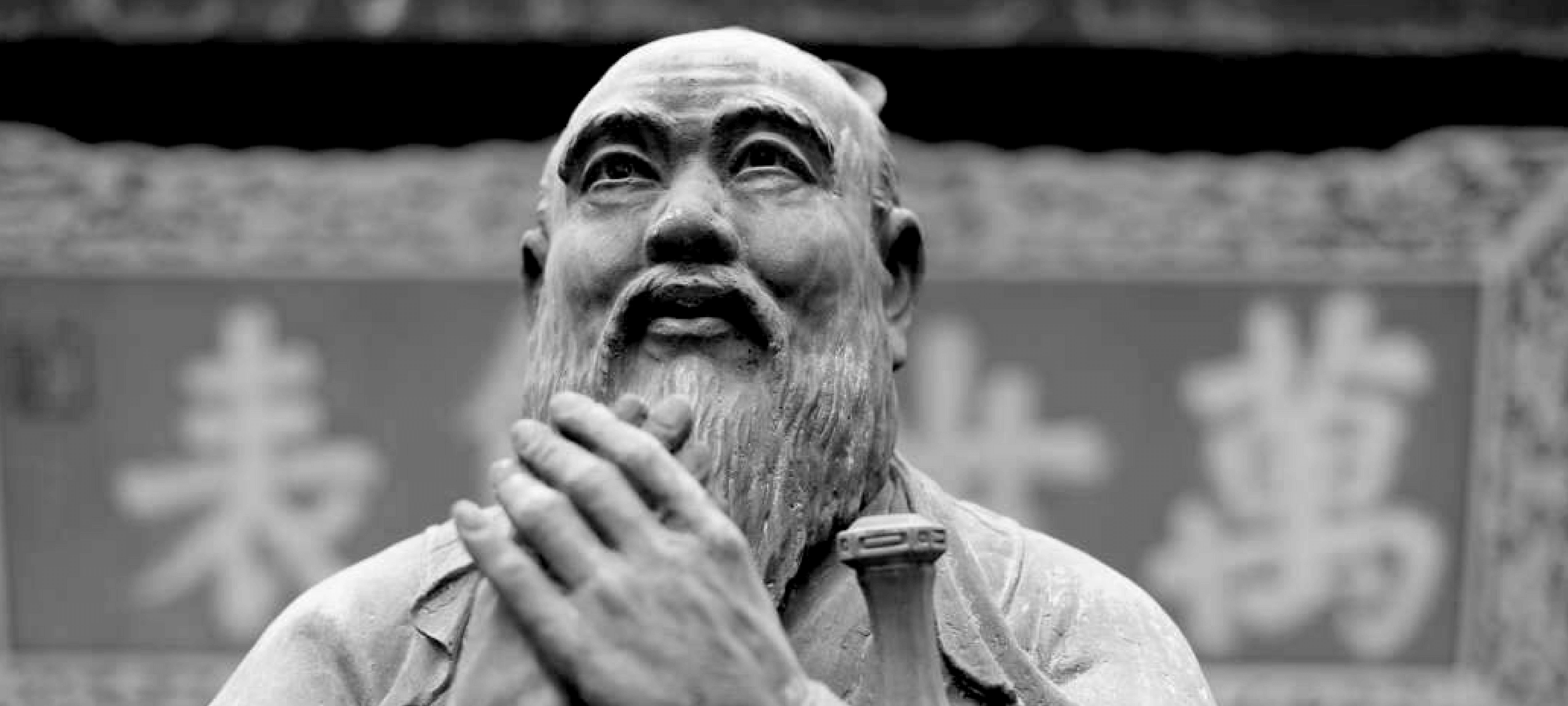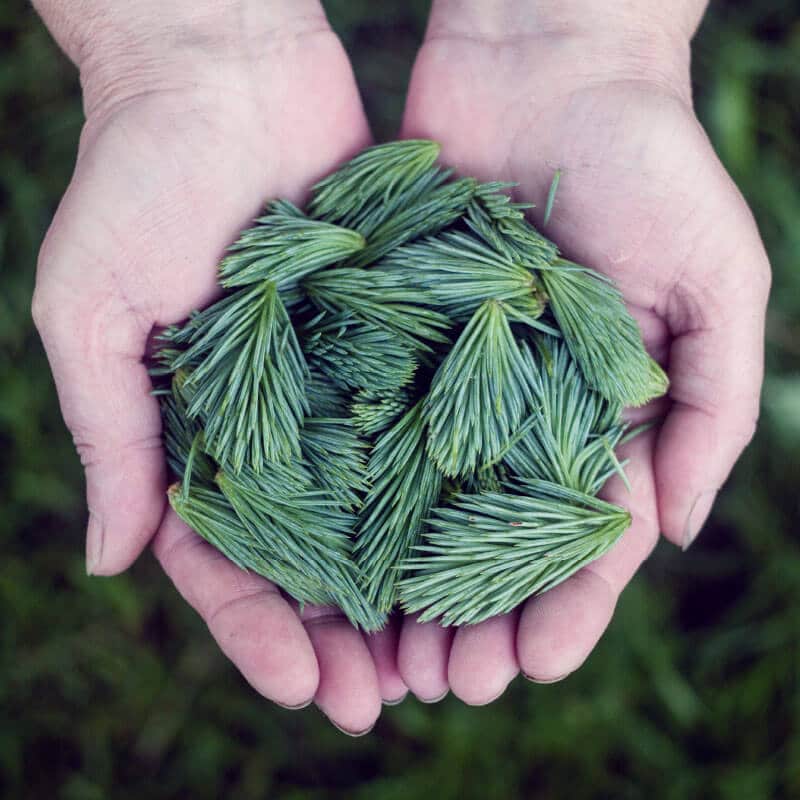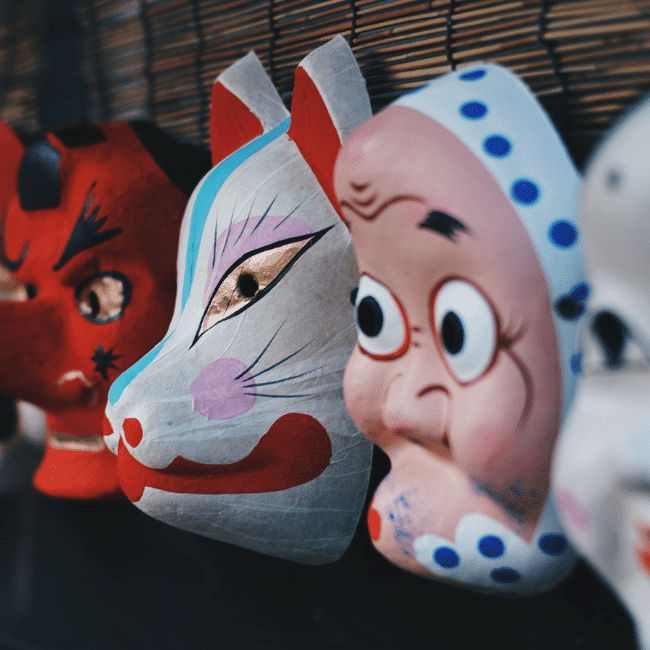Ethics Explainer: Ad Hominem Fallacy

Ad hominem, Latin for “to the man”, is when an argument is rebutted by attacking the person making it rather than the argument itself. It is another informal logical fallacy.
The logical structure of an ad hominem is as follows:
- Person A makes a claim X.
- Person B attacks person A.
- Therefore, X is wrong.
When you see the logical structure of the argument it becomes clear why it’s a fallacy. The truth or falsehood of X has nothing to do with the person arguing in support of it. Imagine if X had been written down and you didn’t know who was arguing the case. If you couldn’t prove it wrong with arguments, then you can’t prove it wrong at all.
Here are some common ad hominem arguments:
Argument from abuse
Steve: “I don’t think we should catch a taxi to dinner. It’s just a short walk and the environment doesn’t need the extra pollution.”
Jaime: “You would say that – you’re so cheap!”
Jaime’s rebuttal doesn’t address Steve’s argument. Instead it abuses him as a person. Not only is this unpleasant, it’s fallacious because Steve’s character doesn’t impact on the truth or falsehood of what he said.
‘Tu quoque’ fallacy
Jaime: “Now that online streaming services are affordable and available in Australia, there’s no justification for pirating films anymore. People shouldn’t do it.”
Steve: “But earlier you’d said you were about to download a torrent for the new Game of Thrones!”
‘Tu quoque’ is Latin for “you also”. The ‘tu quoque’ fallacy occurs when an argument is rebutted because the arguer’s own behaviour is contrary to what they’re arguing. While this is a good way of highlighting hypocrisy, it isn’t a refutation. Just because a person doesn’t ‘walk the walk’ doesn’t mean what they say is false.
Appeal to authority
Steve: I don’t believe in God. Richard Dawkins is an atheist and he’s really smart.
The appeal to authority is actually a reverse ad hominem in which the credentials of another person are used to strengthen an argument. Rather than relying on arguments against God’s existence, Steve relies on the authority of other people who don’t believe in God.
Although it isn’t criticising the person making the argument, it still doesn’t deal with the argument itself. The appeal to authority is another kind of ad hominem fallacy.
Note that the ad hominem fallacy only applies to attempts to discredit (or strengthen) an argument by reference to the person making the argument. In court cases, lawyers will often use a person’s character to prove or undermine their credibility.
This is not necessarily a case of ad hominem – credibility is about whether or not we should believe whether a person is telling the truth, not whether the arguments they make are reasonable ones or not.
Ethics in your inbox.
Get the latest inspiration, intelligence, events & more.
By signing up you agree to our privacy policy
You might be interested in…
Opinion + Analysis
Health + Wellbeing, Relationships
Eight questions to consider about schooling and COVID-19
Opinion + Analysis
Relationships
What we owe to our pets
Opinion + Analysis
Health + Wellbeing, Relationships
Are there any powerful swear words left?
Opinion + Analysis
Health + Wellbeing, Relationships
Send in the clowns: The ethics of comedy
BY The Ethics Centre
The Ethics Centre is a not-for-profit organisation developing innovative programs, services and experiences, designed to bring ethics to the centre of professional and personal life.
Philosophy must (and can) thrive outside universities

Philosophy must (and can) thrive outside universities
Opinion + AnalysisHealth + WellbeingRelationships
BY The Ethics Centre 1 APR 2016
A recent article in ABC Religion by Steve Fuller described philosophy being “at the crossroads”. The article explores philosophy’s relationship to universities and what living a “philosophical life” really looks like.
Reading it, my mind whisked me back to some of my earliest days at The Ethics Centre. Before returning to Sydney, I enjoyed the good fortune to complete my doctorate at Cambridge – one of the great universities of the world. While there, I mastered the disciplines of academic philosophy. However, I also learned the one lesson that my supervisor offered me at our first meeting – I should always “go for the jugular”. As it happens, I was quite good at drawing blood.
Perhaps this was a young philosopher’s sport because, as I grew older and read more deeply, I came to realise what I’d learned to do was not really consistent with the purpose and traditions of philosophy at all. Rather, I had become something of an intellectual bully – more concerned with wounding my opponents than with finding the ‘truth’ in the matter being discussed.
This realisation was linked to my re-reading of Plato – and his account of the figure of Socrates who, to this day, remains my personal exemplar of a great philosopher.
The key to my new understanding of Socrates lay in my realisation that, contrary to what I had once believed, he was not a philosophical gymnast deliberately trying to tie his interlocutors in knots (going for the jugular). Rather, he was a man sincerely wrestling, with others, some of the toughest questions faced by humanity in order to better understand them. What is justice? What is a good life? How are we to live?
The route to any kind of answer worth holding is incredibly difficult – and I finally understood (I was a slow learner) that Socrates subjected his own ideas to the same critical scrutiny he required of others.
In short, he was totally sincere when he said that he really did not know anything. All of his questioning was a genuine exploration involving others who, in fact, did claim to ‘know’. That is why he would bail up people in the agora (the town square) who were heading off to administer ‘justice’ in the Athenian courts.
Surely, Socrates would say, if you are to administer justice – then you must know what it is. As it turned out, they did not.
The significance of Socrates’ work in the agora was not lost on me. Here was a philosopher working in the public space. The more I looked, the more it seemed that this had been so for most of the great thinkers.
So that is what I set out to do.
One of my earliest initiatives was to head down to Martin Place, in the centre of Sydney, where I would set up a circle of 10 plastic chairs and two cardboard signs that said something like, “If you want to talk to a philosopher about ideas, then take a seat”. And there I would sit – waiting for others.
Without fail they would come – young, old, rich, poor – wanting to talk about large, looming matters in their lives. I remember cyclists discussing their place on our roads, school children discussing their willingness to cheat in exams (because they thought the message of society is ‘do whatever it takes’).
Occasionally, people would come from overseas – having heard of this odd phenomenon. A memorable occasion involved a discussion with a very senior and learned rabbi from Amsterdam – the then global head (I think) of Progressive Judaism. On another occasion, a woman brought her mother (visiting from England) to discuss her guilt at no longer believing in God. I remember we discussed what it might mean to feel guilt in relation to a being you claimed not to exist. There were few answers – but some useful insights.
Anyway, I came to imagine a whole series of philosophers’ circles being dotted around Martin Place and other parts of Sydney (and perhaps Australia). After all, why should I be the only philosopher pursuing this aspect of the philosophical life. So I reached out to the philosophy faculty at Sydney University – thinking (naively as it turned out) I would have a rush of colleagues wishing to join me.
Alas – not one was interested. The essence of their message was that they doubted the public would be able to engage with ‘real philosophy’ – that the techniques and language needed for philosophy would be bewildering to non-philosophers. I suspect there was also an undeclared fear of being exposed to their fellow citizens in such a vulnerable position.
Actually, I still don’t really know what led to such a wholesale rejection of the idea.
However, I think it was a great pity other philosophers should have felt more comfortable within the walls of their universities rather than out in the wider world.
I doubt that anything I write or say will be quoted in the centuries to come. However, I would not, for a moment, change the choice I made to step outside of the university and work within the agora. Life then becomes messy and marvellous in equal measure. Everything needs to be translated into language anyone can understand (and I have found that this is possible without sacrificing an iota of philosophical nuance).
I think it was a great pity other philosophers should have felt more comfortable within the walls of their universities rather than out in the wider world.
You constantly need to challenge unthinking custom and practice most people simply take for granted. This does not make you popular. You are constantly accused of being ‘unethical’ because you entertain ideas one group or another opposes. You please almost nobody. You cannot aim to be liked. And you have to deal with the rawness of people’s lives – discovering just how much the issues philosophers consider (especially in the field of ethics) really matter.
This is not to say that ‘academic’ philosophy should be abandoned. However, I can see no good reason why philosophers should think this is the only (or best) way to be a philosopher. Surely, there is room (and a need) for philosophers to live larger, more public lives.
You constantly need to challenge unthinking custom and practice most people simply take for granted. This does not make you popular.
I have scant academic publications to my name. However, at the height of the controversy surrounding the introduction of ethics classes for children not attending scripture in NSW, I enjoyed the privilege of being accused of “impiety” and “corrupting the youth” by the Anglican and Catholic Archbishops of Sydney. Why a ‘privilege’? Because these were precisely the same charges alleged against Socrates. So far, I have avoided the hemlock. For a philosopher, what could be better than that?
Ethics in your inbox.
Get the latest inspiration, intelligence, events & more.
By signing up you agree to our privacy policy
You might be interested in…
Opinion + Analysis
Relationships
Paralympian pay vs. Olympian pay
Opinion + Analysis
Relationships, Society + Culture
The problem with Australian identity
Opinion + Analysis
Health + Wellbeing, Politics + Human Rights
Feminist porn stars debunked
Opinion + Analysis
Relationships, Society + Culture
5 Movies that creepily foretold today’s greatest ethical dilemmas
BY The Ethics Centre
The Ethics Centre is a not-for-profit organisation developing innovative programs, services and experiences, designed to bring ethics to the centre of professional and personal life.
Ethics Explainer: Double-Effect Theory

Double-effect theory recognises that a course of action might have a variety of ethical effects, some ‘good’ and some ‘bad’.
It can be seen as a way of balancing consequentialist and deontological approaches to ethics.
According to the theory, an action with both good and bad effects may be ethical as long as:
- Only the good consequences are intended (we don’t want the bad effects to occur, they’re just inescapable, even if they can be foreseen).
- The good done by the action outweighs the harm it inflicts.
- The bad effect is not the means by which the good effect occurs (we can’t do evil to bring about good – the good and bad consequences have to occur simultaneously).
- The act we are performing is not unethical for some other reason (for example, an attack on human dignity).
- We seek to minimise, if possible, the unintended and inadvertent harm that we cause.
Double-effect is best explained through the classic thought experiment: the Trolley problem.
Imagine a runaway train carriage is hurtling down the tracks toward five railroad workers. The workers are wearing earmuffs and unable to hear the carriage approaching. You have no way of warning them. However, you do have access to a lever which will divert the train onto a side-track on which only one person is working. Should you pull the lever and kill the one man to save five lives?
Take a moment to think about what you would do and your reasons for doing it. Now, consider this alternative.
The train is still hurtling toward the five workers but this time there’s no lever. Instead, you’re a lightweight person standing on a bridge above the railroad. Next to you is a very large man who would be heavy enough to stop the train. You could push the man onto the tracks and stop the train, but it would kill the heavy man. Should you push him off the bridge?
Again, think about what you would do and why you would do it.
Did you say ‘yes’ in the first scenario and ‘no’ in the second? That’s the most common response, but why? After all, in each case you’re killing one person to save five. According to many consequentialists that would be the right thing to do. By refusing to push the man off the bridge, are we being inconsistent?
Double-effect theory provides a way of consistently explaining the difference in our responses.
In the first case, our intention is to save five lives. An unintended, foreseeable consequence of pulling the lever is the death of one worker. But because the stakes are sufficiently high, our intended act (pulling a lever to redirect a train) isn’t intrinsically wrong. The good consequences outweigh the bad. The negative outcomes are side-effects of our good action, and so, we are permitted to pull the lever.
In the second case, the death of the heavy man is not a side-effect. Rather, it is the means (pushing the man off the bridge to stop the train) by which we achieve our goal (saving the five men). The negative outcomes are not unavoidable side-effects that occur at the same time as the good deed. It is causally prior to and directly linked to the good outcome.
This fact has ethical significance because it changes the structure of the action.
Instead of ‘saving lives whilst unavoidably causing someone to die’, it is a case of ‘killing one person deliberately in order to save five’. In the lever scenario, we don’t need the one worker to die in order to save the five. In the latter, we need the heavy man to die. Which means when we push him, we are intentionally killing him.
Double-effect is used in a range of different contexts. In medical ethics it can be used to explain why it would be ethical for a pro-life pregnant woman to take life-saving medicine even if it would likely kill her unborn child (unintended side-effect). It also explains the actions of doctors who increase the dose of opiates to end pain – even though they know that the dosage will end the patient’s life.
In military ethics it explains how an air strike which causes some unavoidable ‘collateral damage’ (the death or injury of non-combatants) might still be permissible – assuming it meets the criteria described above and involves the proportionate and discriminate use of force.
Ethics in your inbox.
Get the latest inspiration, intelligence, events & more.
By signing up you agree to our privacy policy
You might be interested in…
Opinion + Analysis
Health + Wellbeing, Relationships
Five stories to read to your kids this Christmas
Opinion + Analysis
Health + Wellbeing, Relationships
Rationing life: COVID-19 triage and end of life care
Opinion + Analysis
Business + Leadership, Health + Wellbeing, Relationships
Moving on from the pandemic means letting go
Opinion + Analysis
Relationships
It takes a village to raise resilience
BY The Ethics Centre
The Ethics Centre is a not-for-profit organisation developing innovative programs, services and experiences, designed to bring ethics to the centre of professional and personal life.
“Animal rights should trump human interests” – what’s the debate?

“Animal rights should trump human interests” – what’s the debate?
Opinion + AnalysisClimate + EnvironmentRelationships
BY The Ethics Centre 22 MAR 2016
Are the ways humans subject animals to our own needs and wants justified?
Humans regularly impose our own demands on the animal world, whether it’s eating meat, scientific testing, keeping pets, sport, entertainment or protecting ourselves. But is it reasonable and ethical to do so?
Humans and animals
We often talk about humans and animals as though they are two separate categories of being. But aren’t humans just another kind of animal?
Many would say “no”, claiming humans have greater moral value than other animals. Humans possess the ability to use reason while animals act only on instinct, they say. This ability to think this way is held up as the key factor that makes humans uniquely worthy of protection and having greater moral value than animals.
“Animals are not self-conscious and are there merely as means to an end. That end is man.” – Immanuel Kant
Others argue that this is “speciesism” because it shows an unjustifiable bias for human beings. To prove this, they might point to cases where a particular animal shows more reason than a particular human being – for example, a chimpanzee might show more rational thought than a person in a coma. If we don’t grant greater moral value to the animal in these cases, it shows that our beliefs are prejudicial.
Some will go further and suggest that reason is not relevant to questions of moral value, because it measures the value of animals against human standards. In determining how a creature should be treated, philosopher Jeremy Bentham wrote, “… the question is not ‘Can they reason?’, nor ‘Can they talk?’, but ‘Can they suffer?’”
So in determining whether animal rights should trump human interests, we first need to figure out how we measure the value of animals and humans.
Rights and interests
What are rights and how do they correspond to interests? Generally speaking, you have a right when you are entitled to do something or prevent someone else from doing something to you. If humans have the right to free speech, this is because they are entitled to speak freely without anyone stopping them. The right protects an activity or status you are entitled to.
Rights come in a range of forms – natural, moral, legal and so on – but violating someone’s right is always a serious ethical matter.
“Animals are my friends. I don’t eat my friends.” – George Bernard Shaw
Interests are broader than rights and less serious from an ethical perspective. We have an interest in something when we have something to gain or lose by its success or failure. Humans have interests in a range of different projects because our lives are diverse. We have interests in art, medical research, education, leisure, health…
When we ask whether animal rights should trump human interests, we are asking a few questions. Do animals have rights? What are they? And if animals do have rights, are they more or less important than the interests of humans? We know human rights will always trump human interests, but what about animal rights?
Animal rights vs animal welfare
A crucial point in this debate is understanding the difference between animal rights and animal welfare. Animal rights advocates believe animals deserve rights to prevent them from being treated in certain ways. The exploitation of animals who have rights is, they say, always morally wrong – just like it would be for a human.
Animal welfare advocates, on the other hand, believe using animals can be either ethical or, in practice, unavoidable. These people aim to reduce any suffering inflicted on animals, but don’t seek to end altogether what others regard as exploitative practices.
As one widely used quote puts it, “Animal rights advocates are campaigning for no cages, while animal welfarists are campaigning for bigger cages”.
Are they mutually exclusive? What does taking a welfarist approach say about the moral value of animals?
‘Animal rights should trump human interests’ took place on 3 May 2016 at the City Recital Hall in Sydney.
Ethics in your inbox.
Get the latest inspiration, intelligence, events & more.
By signing up you agree to our privacy policy
You might be interested in…
Opinion + Analysis
Health + Wellbeing, Relationships
Male suicide is a global health issue in need of understanding
Opinion + Analysis
Business + Leadership, Relationships
Employee activism is forcing business to adapt quickly
Explainer
Climate + Environment
Ethics Explainer: Longtermism
WATCH
Relationships
Purpose, values, principles: An ethics framework
BY The Ethics Centre
The Ethics Centre is a not-for-profit organisation developing innovative programs, services and experiences, designed to bring ethics to the centre of professional and personal life.
Ethics Explainer: Naturalistic Fallacy

Ethics Explainer: Naturalistic Fallacy
Opinion + AnalysisHealth + WellbeingRelationships
BY The Ethics Centre 15 MAR 2016
The naturalistic fallacy is an informal logical fallacy which argues that if something is ‘natural’ it must be good. It is closely related to the is/ought fallacy – when someone tries to infer what ‘ought’ to be done from what ‘is’.
The is/ought fallacy is when statements of fact (or ‘is’) jump to statements of value (or ‘ought’), without explanation. First discussed by Scottish philosopher, David Hume, he observed a range of different arguments where writers would be using the terms ‘is’ and ‘is not’ and suddenly, start saying ‘ought’ and ‘ought not’.
For Hume, it was inconceivable that philosophers could jump from ‘is’ to ‘ought’ without showing how the two concepts were connected. What were their justifications?
If this seems weird, consider the following example where someone might say:
- It is true that smoking is harmful to your health.
- Therefore, you ought not to smoke.
The claim that you ‘ought’ not to smoke is not just saying it would be unhealthy for you to smoke. It says it would be unethical. Why? Lots of ‘unhealthy’ things are perfectly ethical. The assumption that facts lead us directly to value claims is what makes the is/ought argument a fallacy.
As it is, the argument above is unsound – much more is needed. Hume thought no matter what you add to the argument, it would be impossible to make the leap from ‘is’ to ‘ought’ because ‘is’ is based on evidence (facts) and ‘ought’ is always a matter of reason (at best) and opinion or prejudice (at worst).
Later, another philosopher named G.E. Moore coined the term naturalistic fallacy. He said arguments that used nature, or natural terms like ‘pleasant’, ‘satisfying’ or ‘healthy’ to make ethical claims, were unsound.
The naturalistic fallacy looks like this:
- Breastfeeding is the natural way to feed children.
- Therefore, mothers ought to breastfeed their children and ought not to use baby formula (because it is unnatural).
This is a fallacy. We act against nature all the time – with vaccinations, electricity, medicine – many of which are ethical. Lots of things that are natural are good, but not all unnatural things are unethical. This is what the naturalistic fallacy argues.
Philosophers still debate this issue. For example, G. E. Moore believed in moral realism – that some things are objectively ‘good’ or ‘bad’, ‘right’ or ‘wrong’. This suggests there might be ‘ethical facts’ from which we can make value claims and which are different from ordinary facts. But that’s a whole new topic of discussion.
Ethics in your inbox.
Get the latest inspiration, intelligence, events & more.
By signing up you agree to our privacy policy
You might be interested in…
Big thinker
Politics + Human Rights, Relationships
Big Thinker: Confucius
Opinion + Analysis
Health + Wellbeing
Being a little bit better can make a huge difference to our mental health
Opinion + Analysis
Relationships
Enwhitenment: utes, philosophy and the preconditions of civil society
Opinion + Analysis
Health + Wellbeing, Relationships
Should you celebrate Christmas if you’re not religious?
BY The Ethics Centre
The Ethics Centre is a not-for-profit organisation developing innovative programs, services and experiences, designed to bring ethics to the centre of professional and personal life.
Do Australia’s adoption policies act in the best interests of children?

Do Australia’s adoption policies act in the best interests of children?
Opinion + AnalysisPolitics + Human RightsRelationships
BY Jane Hunt The Ethics Centre 14 MAR 2016
During the last year, I have listened and talked with practitioners, policy makers, adoptees, adoptive parents, children and young people in care, and birth families.
I have heard of the best and worst of human beings. My heart has constricted hearing about the profound harm some have experienced, and it has swelled in joy at the love that human beings can have for each other.
Research shows unequivocally that multiple placements have a negative impact on children.
Adoption in Australia has become fraught in all aspects – politics, policy and practice. It is a complex social issue that presents ethical and moral dilemmas for Government, the NGOs working with vulnerable and at-risk children, and for the broader community. It is complex and nuanced, with no clear response that will work in all cases. And it is highly emotionally charged.
In Australia, there are more than 43,000 children in ‘out of home care’. These children are identified as being ‘at risk’ and cannot remain in the care of their biological parents. They have been removed by child protection practitioners and, depending on the child’s circumstances, have been placed in the care of extended family, or with a guardian, or in short-term foster care.
Once children have been removed, the efforts of the child protection workers and other support services are framed to support the birth parents and to help them to reunify with their children. And this is where one of many ethical dilemmas emerges for the practitioners, policy makers and legislators.
How many opportunities should biological parents be given to demonstrate they are able keep their children safe and parent them? What level of support and services should they receive? And in the meantime, how long should a child stay in temporary care? How many placements is it tolerable for a child to experience?
These are difficult decisions for practitioners to make – each child’s situation is different. One practitioner described weighing up whether to return a child to their birth family against the risk of harm to the child as one of his hardest challenges. Having worked overseas, he believed that in Australia, the scales have tipped toward ‘restoration’ with birth families at all costs. This is not appropriately counter-balanced with an assessment of the risk of harm to children in the process.
Adoption in Australia has become fraught in all aspects – politics, policy and practice.
Compounding the situation is the problem of the availability and quality of foster carers able to care for vulnerable children. One practitioner in a regional town told me of a situation where she had to make a decision not to remove a child from a harmful situation because they did not have an appropriate foster carer available. The fact the child remained in an abusive family environment weighed heavily on the practitioner’s conscience.
Adoption, child protection and out of home care policy and legislation are founded on the assumption that decisions must be made in the ‘best interests of the child’. There is, however, no universally agreed upon definition of what this means.
Foster care is, by nature, temporary. There is always the possibility for the child that their relationship with their carers will end. This means some children experience multiple placements in foster care.
Sometimes the reasons for a change of placement are compelling – to be nearer their school, with siblings or nearer extended family members. However, research shows unequivocally that multiple placements have a negative impact on children.
Lack of security and attachment can have profound impacts on development. I’ve been told that multiple moves teach children that adults ‘come and go’ and cannot be trusted – a view corroborated by some young people in foster care who report feeling they ‘don’t belong’ anywhere.
Even the ‘Permanent Care Orders’ preferred in Victoria, which enable a child to live with a family until they are 18, fall short of providing a child or young person with the psychological and legal security of a family forever.
Why in Australia do we continue to provide a system that fails to meet children’s long term needs?
At the heart of this discussion lies a paralysing ethical dilemma – when a decision needs to be made to remove a child from their biological parents due to harm, neglect or abuse or when it’s not been successful, whose rights should be protected?
The right of the parent to keep their children, or the rights of the children to the conditions that will help them feel safe, secure and loved? Whose pain takes precedence? The parents’ loss and grief or the child’s trauma and pain?
The trauma caused by the historical practices of forced and closed adoptions has made many practitioners and politicians highly attuned to the needs of birth families. We need to learn from the profound hurt and trauma inflicted on many women who were coerced into relinquishing their children.
Adoption is not a panacea – it won’t be in the best interest of every child in long-term care.
The voices of adult adoptees who experienced secrecy, stigma and shame around their adoptions are deserving of understanding and compassion.
But considering or advocating for children to have access to adoption does not deny or ignore these experiences. It is important to learn from the impact of past practices and develop open adoption practices ensuring transparency and honesty for all involved, and provide support services that assist all parties involved in adoption.
It is also important to recognise that attempting to deal with an historical wrong – forced adoption – by loading the policy scales against adoption, creates a situation where everyone loses.
Adoption is not a panacea – it won’t be in the best interest of every child in long-term care, but it should be an option considered for all children that need permanent loving families. This then allows a decision to be made that is child focused and in their best interest.
There are many policy makers, practitioners, legislators, and families trying to acknowledge and navigate the ethical complexities of child protection, foster care and adoption. It is critical we continue in this direction, without being subsumed by the shame of our cultural past, to put the needs of vulnerable and at risk children first.
Ethics in your inbox.
Get the latest inspiration, intelligence, events & more.
By signing up you agree to our privacy policy
You might be interested in…
WATCH
Relationships
How to have moral courage and moral imagination
Opinion + Analysis
Health + Wellbeing, Relationships
Five stories to read to your kids this Christmas
Opinion + Analysis
Relationships, Society + Culture
Inside The Mind Of FODI Festival Director Danielle Harvey
Big thinker
Politics + Human Rights
Big Thinker: Michael Sandel
BY The Ethics Centre
The Ethics Centre is a not-for-profit organisation developing innovative programs, services and experiences, designed to bring ethics to the centre of professional and personal life.
Male suicide is a global health issue in need of understanding

Male suicide is a global health issue in need of understanding
Opinion + AnalysisHealth + WellbeingRelationships
BY Brian Draper The Ethics Centre 9 MAR 2016
“This is a worldwide phenomenon in which men die at four times the rate of women. The four to one ratio gets closer to six or seven to one as people get older.”
That’s Professor Brian Draper, describing one of the most common causes of death among men: Suicide.
Suicide is the cause of death with the highest gender disparity in Australia – an experience replicated in most places around the world, according to Draper.
So what is going on? Draper is keen to avoid debased speculation – there are a lot of theories but not much we can say with certainty. “We can describe it, but we can’t understand it,” he says. One thing that seems clear to Draper is it’s not a coincidence so many more men die by suicide than women.
If you are raised by damaged parents, it could be damaging to you.
“It comes back to masculinity – it seems to be something about being male,” he says.
“I think every country has its own way of expressing masculinity. In the Australian context not talking about feelings and emotions, not connecting with intimate partners are factors…”
The issue of social connection is also thought to be connected in some way. “There is broad reluctance by many men to connect emotionally or build relationships outside their intimate partners – women have several intimate relationships, men have a handful at most,” Draper says.
You hear this reflection fairly often. Peter Munro’s feature in the most recent edition of Good Weekend on suicide deaths among trade workers tells a similar story.
Mark, an interviewee, describes writing a suicide note and feeling completely alone until a Facebook conversation with his girlfriend “took the weight of his shoulders”. What would have happened if Mark had lost Alex? Did he have anyone else?
None of this, Draper cautions, means we can reduce the problem to idiosyncrasies of Aussie masculinity – toughness, ‘sucking it up’, alcohol… It’s a global issue.
“I’m a strong believer in looking at things globally and not in isolation. Every country will do it differently, but you’ll see these issues in the way men interact – I think it’s more about masculinity and the way men interact.”
Another piece of the puzzle might – Draper suggests – be early childhood. If your parents have suffered severe trauma, it’s likely to have an effect.
“If you are raised by damaged parents, it could be damaging to you. Children of survivors of concentration camps, horrendous experiences like the killing fields in Cambodia or in Australia the Stolen Generations…”
It comes back to masculinity – it seems to be something about being male.
There is research backing this up. For instance, between 1988 and 1996 the children of Vietnam War veterans died by suicide at over three times the national average.
Draper is careful not to overstate it – there’s still so much we don’t know, but he does believe there’s something to early childhood experiences. “Sexual abuse in childhood still conveys suicide risk in your 70s and 80s … but there’s also emotional trauma from living with a person who’s not coping with their own demons.”
“I’m not sure we fully understand these processes.” The amount we still need to understand is becoming a theme.
What we don’t know is a source of optimism for Draper. “We’ve talked a lot about factors that might increase your risk but there’s a reverse side to that story.”
“A lot of our research is focussed predominantly on risk rather than protection. We don’t look at why things have changed for the better … For example, there’s been a massive reduction in suicides in men between 45-70 in the last 50 years.”
“Understanding what’s happened in those age groups would help.”
It’s pretty clear we need to keep talking – researchers, family, friends, support workers and those in need of support can’t act on what they don’t know.
If you or someone you know needs support, contact:
-
Lifeline 13 11 14
-
Men’s Line 1300 78 99 78
-
beyondblue 1300 224 636
-
Kids Helpline 1800 551 800
Ethics in your inbox.
Get the latest inspiration, intelligence, events & more.
By signing up you agree to our privacy policy
You might be interested in…
Opinion + Analysis
Health + Wellbeing, Relationships
The truths COVID revealed about consumerism
Opinion + Analysis
Business + Leadership, Health + Wellbeing, Society + Culture
Ethical concerns in sport: How to solve the crisis
Opinion + Analysis
Health + Wellbeing, Relationships
Duties of care: How to find balance in the care you give
Opinion + Analysis
Health + Wellbeing, Business + Leadership
The ethical dilemma of the 4-day work week
BY Brian Draper
Professor Brian Draper is Senior Old Age Psychiatrist in the South East Sydney Local Health Network and Conjoint Professor in the School of Psychiatry at UNSW.
BY The Ethics Centre
The Ethics Centre is a not-for-profit organisation developing innovative programs, services and experiences, designed to bring ethics to the centre of professional and personal life.
Ozi Batla: Fatherhood is the hardest work I’ve ever done
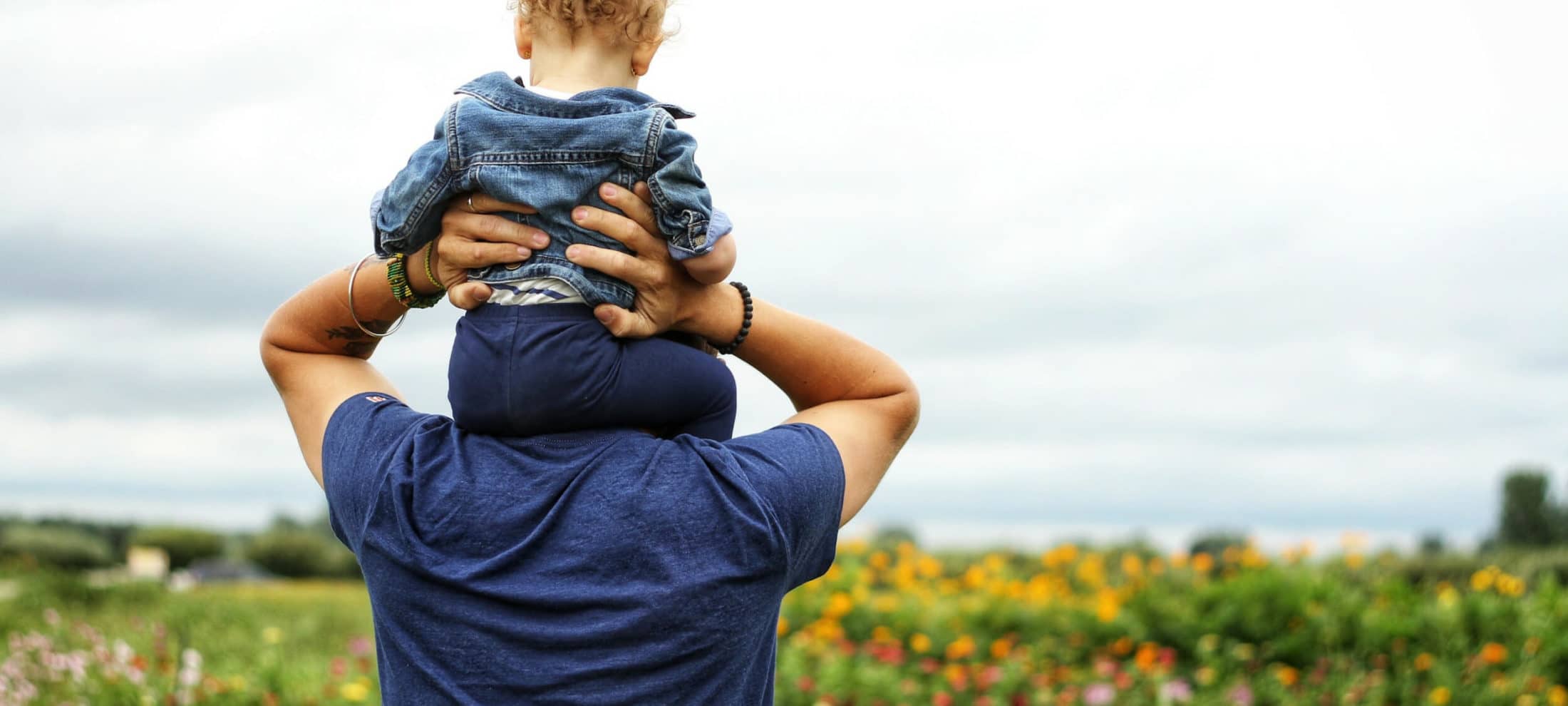
Ozi Batla: Fatherhood is the hardest work I’ve ever done
Opinion + AnalysisRelationships
BY Shannon Kennedy The Ethics Centre 4 MAR 2016
On his interest in ‘Mankind – Deconstructing Masculinity’:
Masculinity is something I’ve been thinking about a bit lately. I’ve been raising my boy for the past year and a half and having your first kid makes you wonder about the things you’ve learned and the things you want to pass on.
There are a lot of things I learned that I don’t want to pass on, and even more stuff I never really considered before I became a dad – things I don’t have the answers for.
On being a full-time dad:
I’ve had to come to grips with the challenges of being a stay-at-home dad.
Support and network groups are almost entirely set up for mums. Our entire parenting language is set up around mums. We have ‘mothers’ groups’ or in my case ‘mums’ surfers groups’ so someone could watch my son while I went for a surf. I felt really excluded from a lot of these activities.
It’s the hardest work I’ve ever done but it’s still not considered a man’s work.
There’s a patronising assumption about men in parenting roles. My boy had a meltdown at swimming the other day and other parents looked at me as though I wasn’t used to it. They said things like “Oh, you’re doing so well”, and I thought “Thanks, I’ve been doing this full time for a year and a half”. It felt pretty patronising.
Like a lot of men, I defined myself by my work, which has taken a back seat lately. I’ve been dealing with the shifting definitions of my own identity. It’s weird, because it’s the hardest work I’ve ever done but it’s still not considered a man’s work.
On the pressure fathers face to teach their sons ‘what it means to be a man’:
I think it’s probably the same for most men. I’m assuming it was for my dad – he didn’t have those answers for me when I was growing up. A lot of it gets left to outside sources to inform you.
I didn’t really take much of that on board. I just tried to keep my head down at school and get out of there. The way the school approached masculinity was completely at odds with the way my parents were trying to raise me and my brothers.
I’ve only recently realised the influence of all this. In a few years’ time my son is going to get picked on, get into fights, and ask me the same kind of questions.
On his journey toward hip hop:
The school I went to was very sort of ‘jock’, and I wasn’t like that at all. My journey into hip hop was a way of dealing with that and overcoming the trauma. It was a defensive mechanism – my parents didn’t instil this in me – but you do need to fight in one way or another. Words became my weapons. It’s only recently that I’ve realised that was a big influence in leading me into hip hop.
On masculinity and sexism in Australian hip hop:
Like a lot of the music industry, hip hop has been male dominated, although it hasn’t been part of my experience – aside from a few years of battle rapping, which was part of my journey to establish some boundaries. Battling was a way to make up for my time at school and I wish I’d been able to use those skills to create space around me.
There is a lot of very macho and sexist culture around hip hop music, but I don’t think it’s exclusively that way, and I think it’s been changing, in lots of ways, The Herd was a challenge to that whole notion of hip hop.
On The Herd’s re-imagination of Redgum’s ‘I Was Only 19’:
War is an extension of those more negative aspects of masculinity. It’s almost the biggest manifestation of them. There was a lot of anger around the Vietnam War – seeing these patterns repeated. I think the original is quite angry in its own folksy way.
I know from hanging out with John Schumann that the people he was writing about, and writing for, were certainly angry about the way they’d been treated.
War is an extension of those negative aspects of masculinity.
On veterans:
There’s a notion, especially in Australia – it probably comes from the Anglo tradition – that you should just “suck it up and get on with it”. I think it’s one of the most damaging parts of male identity in this country and a big contribution to high youth suicide rates, drug abuse and mental health issues.
There have been big campaigns to move that along, but generally men are still supposed to cop it on the chin and move on. I think that’s a major issue for a lot of returned soldiers and other men. It’s still considered fairly awkward to delve into your feelings with other men.
On radicalisation and alcohol violence among young people:
It’s all part of the same thing. I think a lot of kids involved with radical organisations are pretty stupid, but kids tend to be.
You do need to fight in one way or another. For me, words became my weapons.
These kids are caught between two worlds. Being a young male, I think feeling anger, learning to deal with it, and finding an outlet for it is really important. Anger does express itself in different ways, but not having a culture where it’s acceptable to show anger non-physically leads to a number of issues.
Combine all this with the fact that the one space where it is acceptable to be emotional is when you’re pissed, and it’s not surprising to see the problems we do.
For me, hip hop – when I was a teenager – was my angry refuge. The sort of stuff I listened to when I was a teenager isn’t stuff I listen to these days. The music is still nostalgic, but kind of embarrassing. It’s the stuff that attracts young men though. It resonates with something inside them or gives them a bit of an outlet.
Ethics in your inbox.
Get the latest inspiration, intelligence, events & more.
By signing up you agree to our privacy policy
You might be interested in…
Explainer
Business + Leadership, Politics + Human Rights, Relationships
Ethics Explainer: Power
Opinion + Analysis
Relationships
You don’t like your child’s fiancé. What do you do?
Opinion + Analysis
Relationships
Is modesty an outdated virtue?
Opinion + Analysis
Relationships
A guide to ethical gift giving (without giving to charity)
BY The Ethics Centre
The Ethics Centre is a not-for-profit organisation developing innovative programs, services and experiences, designed to bring ethics to the centre of professional and personal life.
Ethics Explainer: Virtue Ethics

Virtue ethics is arguably the oldest ethical theory in the world, with origins in Ancient Greece.
It defines good actions as ones that display embody virtuous character traits, like courage, loyalty, or wisdom. A virtue itself is a disposition to act, think and feel in certain ways. Bad actions display the opposite and are informed by vices, such as cowardice, treachery, and ignorance.
For Aristotle, ethics was a key element of human flourishing because it taught people how to differentiate between virtues and vices. By encouraging examination, more people could live a life dedicated to developing virtues.
It’s one thing to know what’s right, but it’s another to actually do it. How did Aristotle advise us to live our virtues?
By acting as though we already have them.
Excellence as habit
Aristotle explained that both virtues and vices are acquired by repetition. If we routinely overindulge a sweet tooth, we develop a vice — gluttony. If we repeatedly allow others to serve themselves dinner before us, we develop a virtue – selflessness.
Virtue ethics suggests treating our character as a lifelong project, one that has the capacity to truly change who we are. The goal is not to form virtues that mean we act ethically without thinking, but to form virtues that help us see the world clearly and make better judgments as a result.
In a pinch, remember: vices distort, virtues examine.
A quote most of the internet attributes to Aristotle succinctly reads: “We are what we repeatedly do. Excellence, then, is not an act, but a habit”.
Though he didn’t actually say this, it’s a good indication of what virtue ethics stands for. We can thank American philosopher, Will Durant, for the neat summary.
Aim for in between
There are two practical principles that virtue ethics encourages us to use in ethical dilemmas. The first is called The Golden Mean. When we’re trying to work out what the virtuous thing to do in a particular situation is, look to what lies in the middle between two extreme forms of behaviour. The mean will be the virtue, and the extremes at either end, vices.
Here’s an example. Imagine your friend is wearing a horrendous outfit and asks you how they look. What are the extreme responses you could take? You could a) burst out laughing or b) tell them they look wonderful when they don’t.
These two extremes are vices – the first response is malicious, the second is dishonest. The virtuous response is between these two. In this case, that would be gently — but honestly — telling your friend you think they’d look nicer in another outfit.
Imagination
The second is to use our imagination. What would we do if we were already a virtuous person? By imagining the kind of person we’d like to be and how we would want to respond we can start to close the gap between our aspirational identity and who we are at the moment.
Virtue ethics can remind us of the importance of role models. If you want someone to learn ethics, show them an ethical person.
Some argue virtue ethics is overly vague in guiding actions. They say its principles aren’t specific enough to help us overcome difficult ethical conundrums. “Be virtuous” is hard to conceptualise. Others have expressed concern that virtues or vices aren’t agreed on by everybody. Stoicism or sexual openness can be a virtue to some, a vice to others.
Finally, some people think virtue ethics breeds ‘moral narcissism’, where we are so obsessed with our own ethical character that we value it above anyone or anything else.
Ethics in your inbox.
Get the latest inspiration, intelligence, events & more.
By signing up you agree to our privacy policy
You might be interested in…
Explainer
Health + Wellbeing, Relationships
Ethics Explainer: Eudaimonia
Opinion + Analysis, READ
Society + Culture, Relationships
Losing the thread: How social media shapes us
Big thinker
Health + Wellbeing, Relationships
Big Thinker: Shulamith Firestone
Explainer
Relationships
Ethics Explainer: Pragmatism
BY The Ethics Centre
The Ethics Centre is a not-for-profit organisation developing innovative programs, services and experiences, designed to bring ethics to the centre of professional and personal life.
Ethics Explainer: Consequentialism

Consequentialism is a theory that says whether something is good or bad depends on its outcomes.
An action that brings about more benefit than harm is good, while an action that causes more harm than benefit is not. The most famous version of this theory is utilitarianism.
Although there are references to this idea in the works of ancient philosopher Epicurus, it’s closely associated with English philosopher Jeremy Bentham.
Bentham’s theory of utilitarianism focussed on which actions were most likely to make people happy. If happiness was the experience of pleasure without pain, the most ethical actions were ones that caused the most possible happiness and the least possible pain.
He even developed a calculator to work out which actions were better or worse – the ‘felicific calculus’. Because it counted every person’s pleasure or pain as the same, regardless of age, wealth, race, etc. utilitarianism could be seen as a radically egalitarian philosophy.
Bentham’s views are most closely aligned with act utilitarianism. This basic form of consequentialism holds an action as ethical if and only if it produces more beneficial/pleasure-causing outcomes than negative/pain-causing ones. Whenever we are faced with a decision, an act consequentialist will expect us to ask that question.
John Stuart Mill, a student of Bentham’s, disagreed. He believed it was too difficult for a society to run if it had to consider the specific costs/benefits of every single action. How could we have speeding laws, for example, if it would sometimes be ethical to break the speed limit?
Instead, Mill believed we should figure out which set of rules would create the most happiness over an extended period of time and then apply those in every situation. This was his theory of rule utilitarianism.
According to this theory, it would be unethical for you to speed on an empty street at two o’clock in the morning. Even if nobody would be hurt, our speeding laws mean less people are harmed overall. Keeping to those rules ensures that.
Consequentialism is an attractive ethical approach because it provides clear and practical guidance – at least in situations where outcomes are easy to predict. The theory is also impartial. By asking us to maximise benefit for the largest number of people (or, for Peter Singer and other preference utilitarians, creatures who have preferences), we set aside our personal biases and self-interest to benefit others.
One problem with the theory is that it can be hard to measure different benefits to decide which one is morally preferable. Is it better to give my money to charity or spend it studying medicine so I can save lives? Many forms of consequentialism have been proposed that attempt to deal with the issue of comparing moral value.
The other concern people express is the tendency of consequentialism to use ‘ends justify the means’ logic. If all we are concerned with is getting good outcomes, this can seem to justify harming some people in order to benefit others. Is it ethical to allow some people to suffer so more people can live well?
Ethics in your inbox.
Get the latest inspiration, intelligence, events & more.
By signing up you agree to our privacy policy
You might be interested in…
Opinion + Analysis
Relationships, Society + Culture
The problem with Australian identity
Opinion + Analysis
Relationships, Climate + Environment
Blindness and seeing
WATCH
Relationships
Unconscious bias
Opinion + Analysis
Business + Leadership, Relationships
